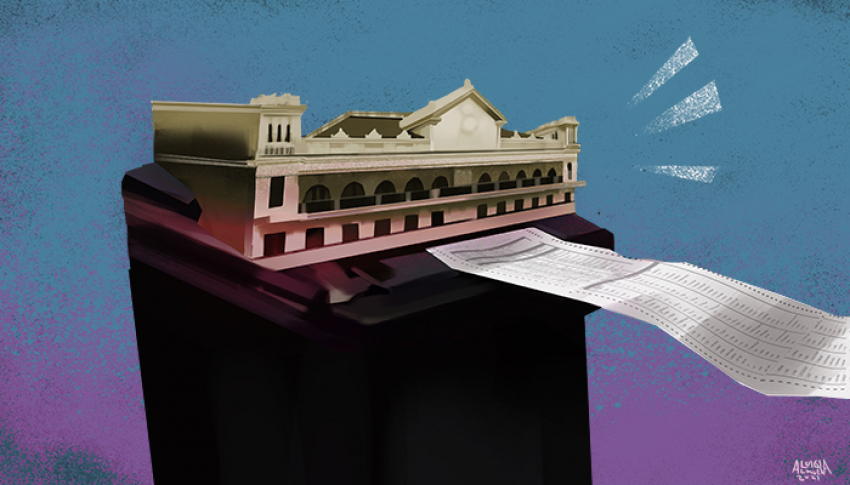
By the numbers: Voter turnout, 2001 to 2016 elections
By Martha Teodoro
Voter turnout has been on the average of 76% for the past two decades. It tends to go up slightly higher when it’s time to vote for the president and vice-president or during the national elections every six years.
According to Article V of the 1987 Constitution, suffrage or the right to vote may be exercised by “all citizens of the Philippines not otherwise disqualified by law, who are at least eighteen years of age, and who shall have resided in the Philippines for at least one year and in the place wherein they propose to vote for at least six months immediately preceding the election.”
This right knows no bounds at all for qualified citizens living and working at home or overseas. “No literacy, property, or other substantive requirement shall be imposed on the exercise of suffrage,” the 1987 Constitution reads.
However, roughly three quarters of registered voters have been voting since 2001 on average. “Registered Voters” refers to voters who are registered in the different cities and municipalities in the country.
In the 2016 national polls alone, 81.95 percent of the 54,363,844 registered voters turned up to vote. This was the highest percentage of voter turnout since 2001. A total of 44,549,848 individuals were elected during the 2016 polls.
Siquijor has the highest voter turnout with 89.87 with 61,999 out of 68,988 registered voters going to the polls. It is followed by Abra with 89.14% voter turnout or 139,924 out of 156,968 individuals. A total of 9,668 out of 11,006 voters or 87.84% voted in Batanes.
Rizal had the lowest voting turnout in 2016. Only 71.98% of the locals voted during the national elections. Rizal is followed by Cavite with only 75.43% residents voting and Zamboanga Del Sur with 73.83% of the registered voters voting.
Regionally, more voters in the Ilocos Region (Region 1) participated in the National Elections, with 85.58%. This is followed by CARAGA Region with 85.24% of its registered voters actually voting and Central Visayas (Region 7) with 85.17% of its registered voters actually voted.
Meanwhile, the Zamboanga Peninsula (Region 9) registered the least number of registered voters actually voting with 77.54%, followed by the Southern Tagalog Region (Region IV-A) with 77.81% and the National Capital Region with only 78.62% of its registered voters actually voting.
It is worthy to note however that while the elected president that time, Rodrigo Duterte, is from Davao City, only 74.23 percent or 643,528 out of 873,670 individuals voted during the 2016 polls. The Davao Region (Region 11) only had 80.99% of its registered voters actually voting during the 2016 elections.
The 2007 midterm elections registered the lowest number of voter turnout since 2001. The National Capital Region only had 62.10% of its registered voters actually voting, followed by SOCCSKSARGEN or Central Mindanao (Region 12) having only 70.57%.
The Davao Region (Region 11) only had 68.0% of its voters or 1,515,321 individuals actually voting out of 2,227,279 registered voters of the region.
The Ilocos Region (Region 1) registered the highest number of voters, with 1,939,639 out of 2,404,012 or 80.68%.
This is followed by the Autonomous Region of Muslim Mindanao with 1,110,815 out of 1,384,626 or 80.22% registered voters actually voting.
The Eastern Visayas (Region 8) had 79.99% of its registered voters actually voting with 1,758,278 voters out of 2,198,101.
Data on voter registration and voter turnout from 2001 to 2016 are uploaded in Datatalk.




